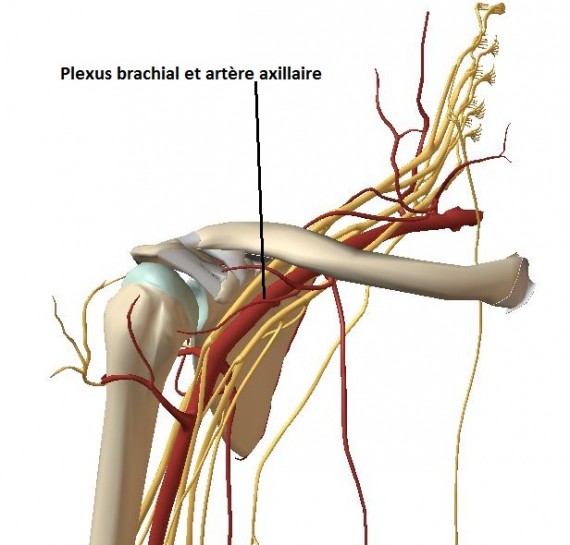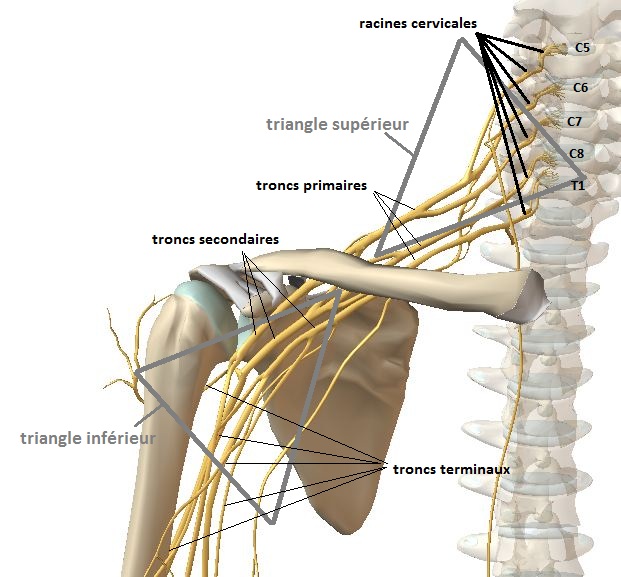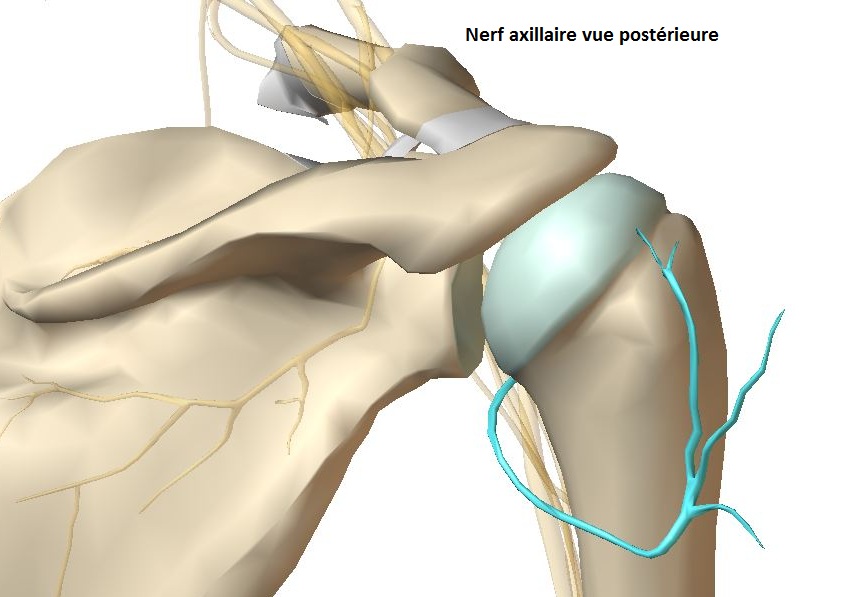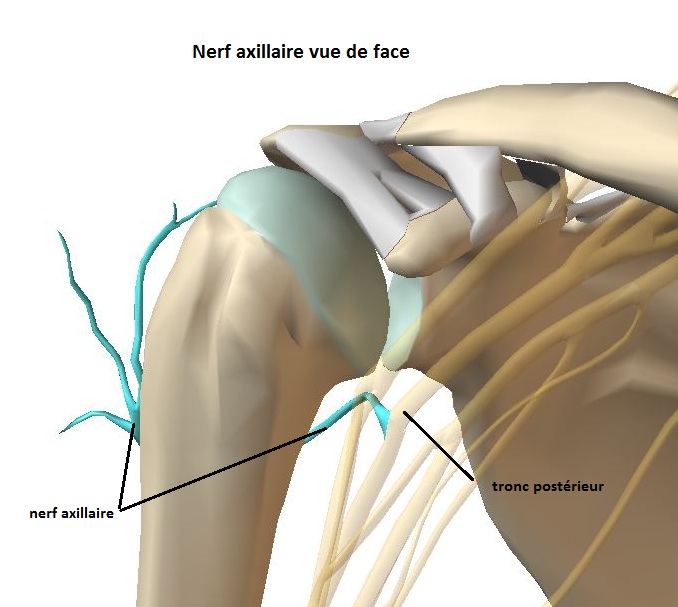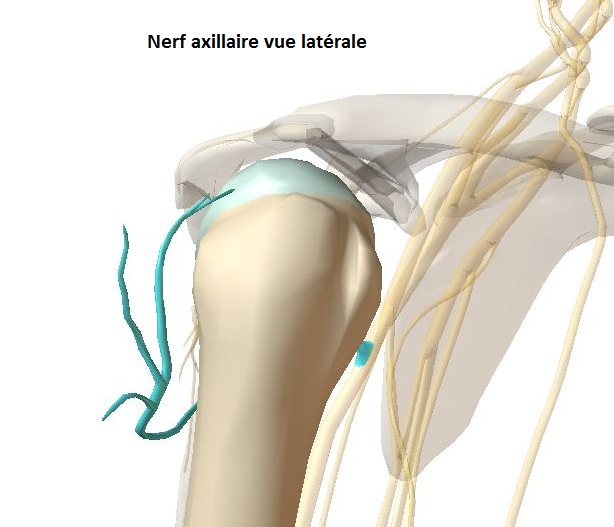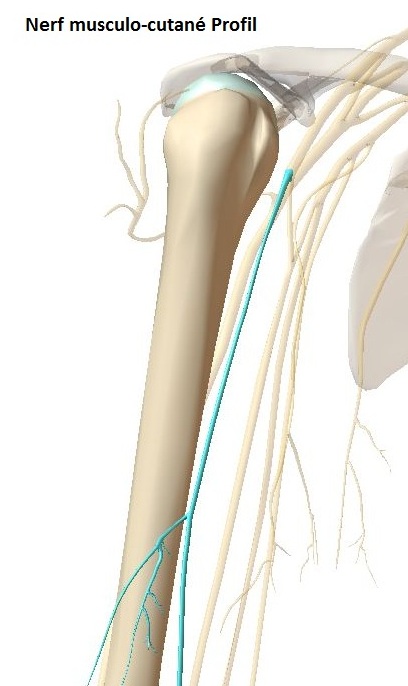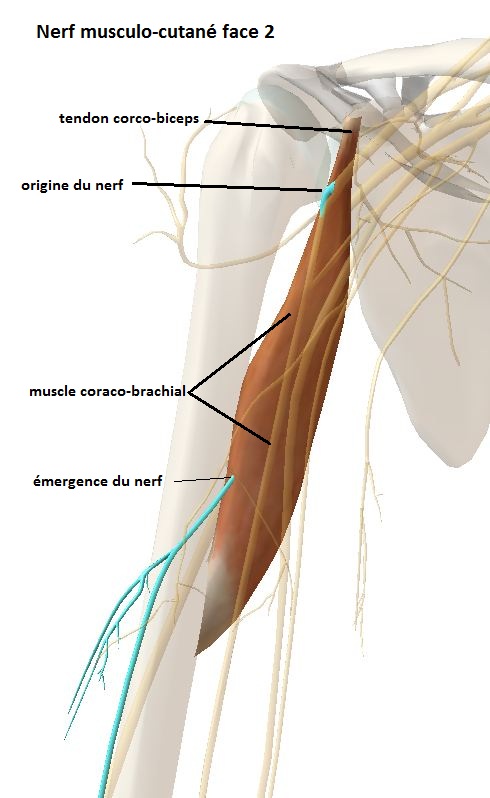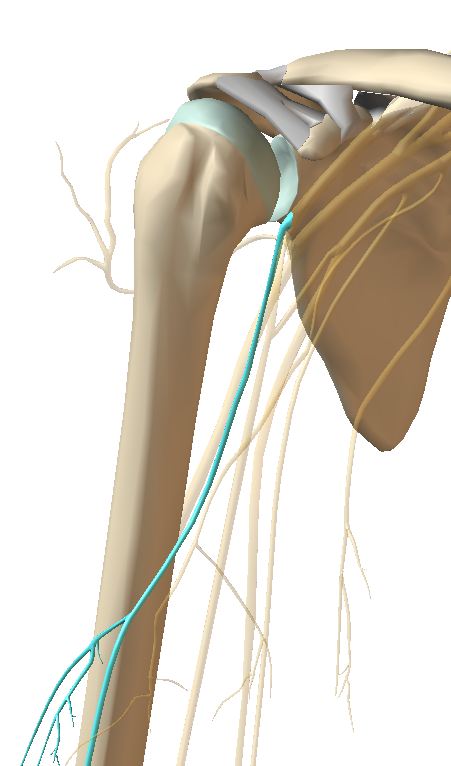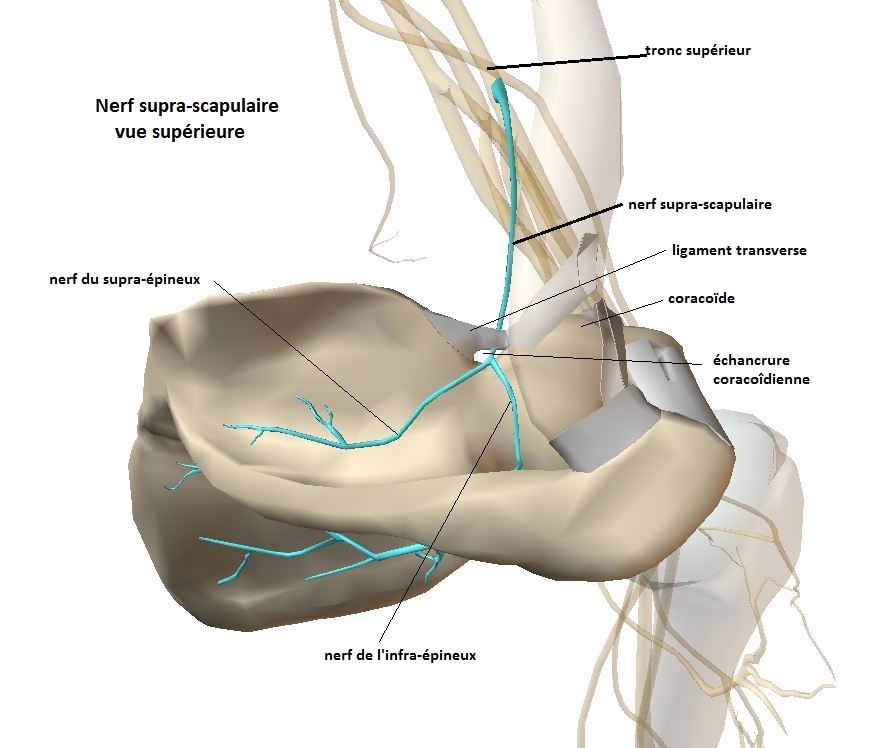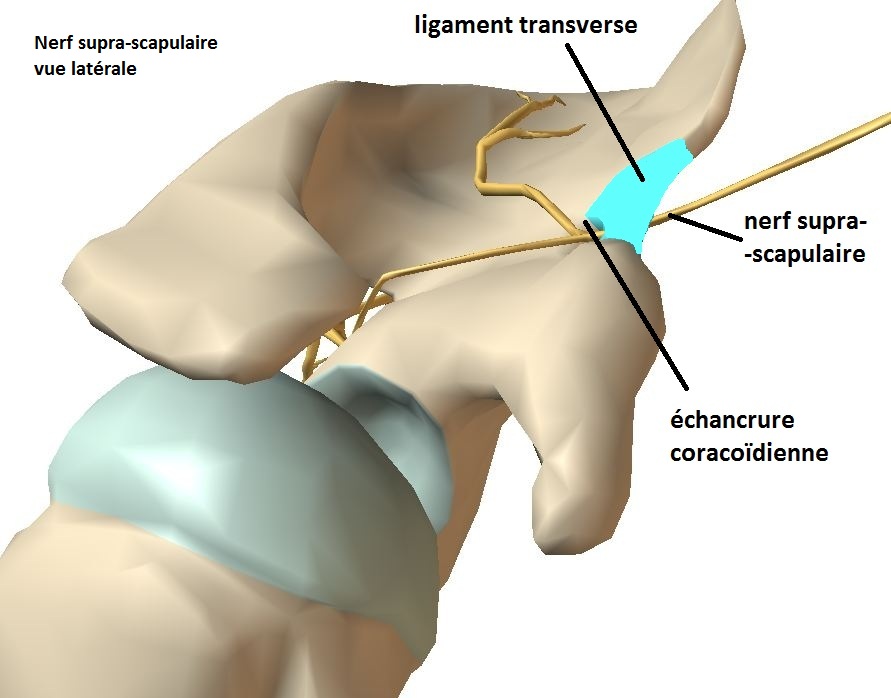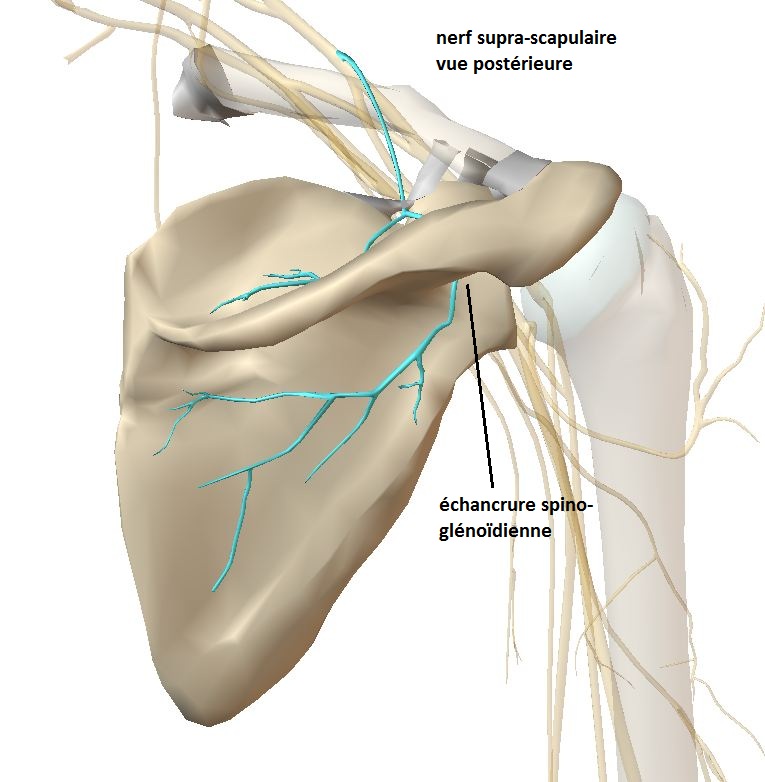The nerves
A nerve is a sort of two-way power cable from the spinal cord and the brain.
It allows at the level of a member to:
control the muscles to perform movements (motor role);
to report various information to the brain such as sensation (sensory role), pain (nociceptive role), position in limb space (proprioceptive role);
also to control the cutaneous heat, the circulation of the blood by means of micro-vessels (vegetative role);
And many other things ! …
Some nerves are mixed (motor and sensory control), pure motor or purely sensory
We will confine ourselves here to the main nerves of the shoulder after having briefly evoked their origin, namely the brachial plexus.

